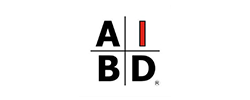AIBD Pushes Key Updates in ICC Code Development Hearings
|
Hello Reader, The Group B code development hearings for the 2027 I-Codes kicked off Sunday afternoon in Orlando, Florida. Representing AIBD, Building Codes Committee Chairman Jack Butler and Executive Director Steve Mickley have been actively presenting nine proposals on the organization's behalf. SPECIAL CONDITION.
An element of the construction site or design that is outside the parameters upon which the code is based or exceeds the prescriptive guidance found in the code and is unique to the project rather than generally applicable within the project area.
The text struck was the modification made during the discussion. In addition, the proposal included the ability for plans to be submitted in digital format, which was missing in the IBC and IECC. SUPPLEMENTAL CONSTRUCTION DOCUMENT.
A construction document not normally provided as part of the standard permit application package for the type of work proposed that demonstrates how the proposed design addresses a special condition presented by the project so as to meet the intent of the code.
The committee approved the proposal with a vote of 12 to 1. Jack Butler testified on behalf of AIBD at the ICC code hearing. Unfortunately, the definitions were rejected when the same proposal was presented to the residential code development committee the day before. However, it was their comments that prompted the modification that ultimately led to approval with the other committees. It's typical for only a small minority of proposals to get committee recommendations during this process. For AIBD, this round is 22%. The proposal for the building designer definitions was poorly received during the residential code committee meeting. Similarly, in the building code and existing building code committee meeting, the proposal and the one including the introduction of "Building Designer in Responsible Charge" failed to gain approval. Another proposal is scheduled for consideration on Saturday or Sunday, but its likelihood of success has been significantly diminished due to its association with previously rejected proposals. Click here to review all the proposals initially submitted to ICC in January. The next step will be for the public to provide comments and for the proponents to make modifications, beginning in June. Then, the surviving proposals move on to a second Committee Action Hearing in Cleveland in October. Stay tuned, The A-Team
|
American Institute of Building Design (AIBD)
The American Institute of Building Design (AIBD) is a professional association that promotes the highest standards of excellence in residential building design. AIBD offers a variety of resources to its members, including continuing education, networking opportunities, and marketing assistance. AIBD is a valuable resource for anyone interested in a career in residential building design. If you want to improve your skills, network with other professionals, and stay up-to-date on the latest trends, AIBD is the perfect organization for you.
Your dream job could be found today! To ensure you receive our emails, please add info@aibd.org to your address book. My Account | Job Search | Manage Resumes | Job Alerts The AIBD Career Center is your go-to resource for career development and advancement. Top employers turn to the AIBD Career Center to fill their niche roles with specialized talent - such as yours. As a job seeker on the AIBD Career Center you can: Browse jobs using robust filters to narrow your results to only those jobs...
Hello Reader, Architectural details are often the most time-consuming and frustrating part of switching software. In this presentation, AIBD Board Member Joey Martin will show you how to set up your template in Chief Architect so your model includes all the details you need. A little time spent up front will save you loads of time later when creating detailed designs directly from your model. Your registration is sponsored by: Tuesday, May 6 - 2:00 pm ET Preparing Details from your Chief...
Thirty-two years ago today, computer scientist Tim Berners-Lee revolutionized the world by releasing the source code for the first web browser and editor.This pivotal moment laid the groundwork for the internet, which has since transformed how we access information, learn, and connect with one another.Fast forward to today, and we’re standing at the forefront of another technological revolution: artificial intelligence.AI is reshaping industries, making complex tasks faster and more...
